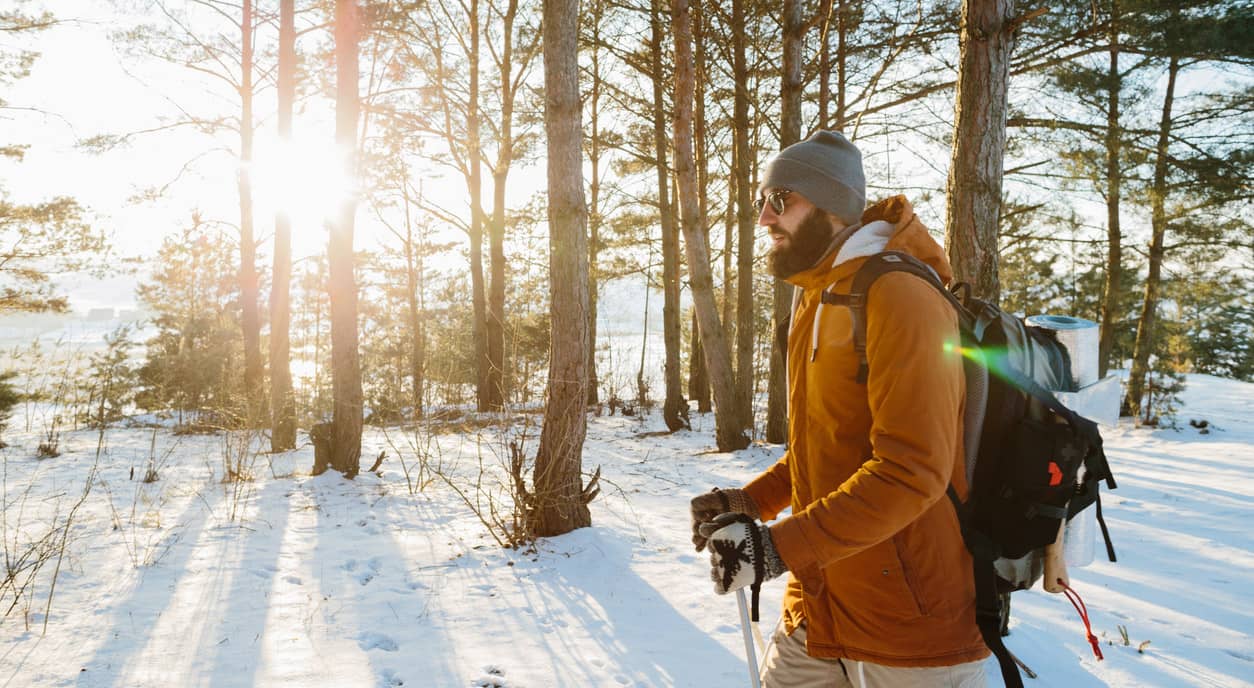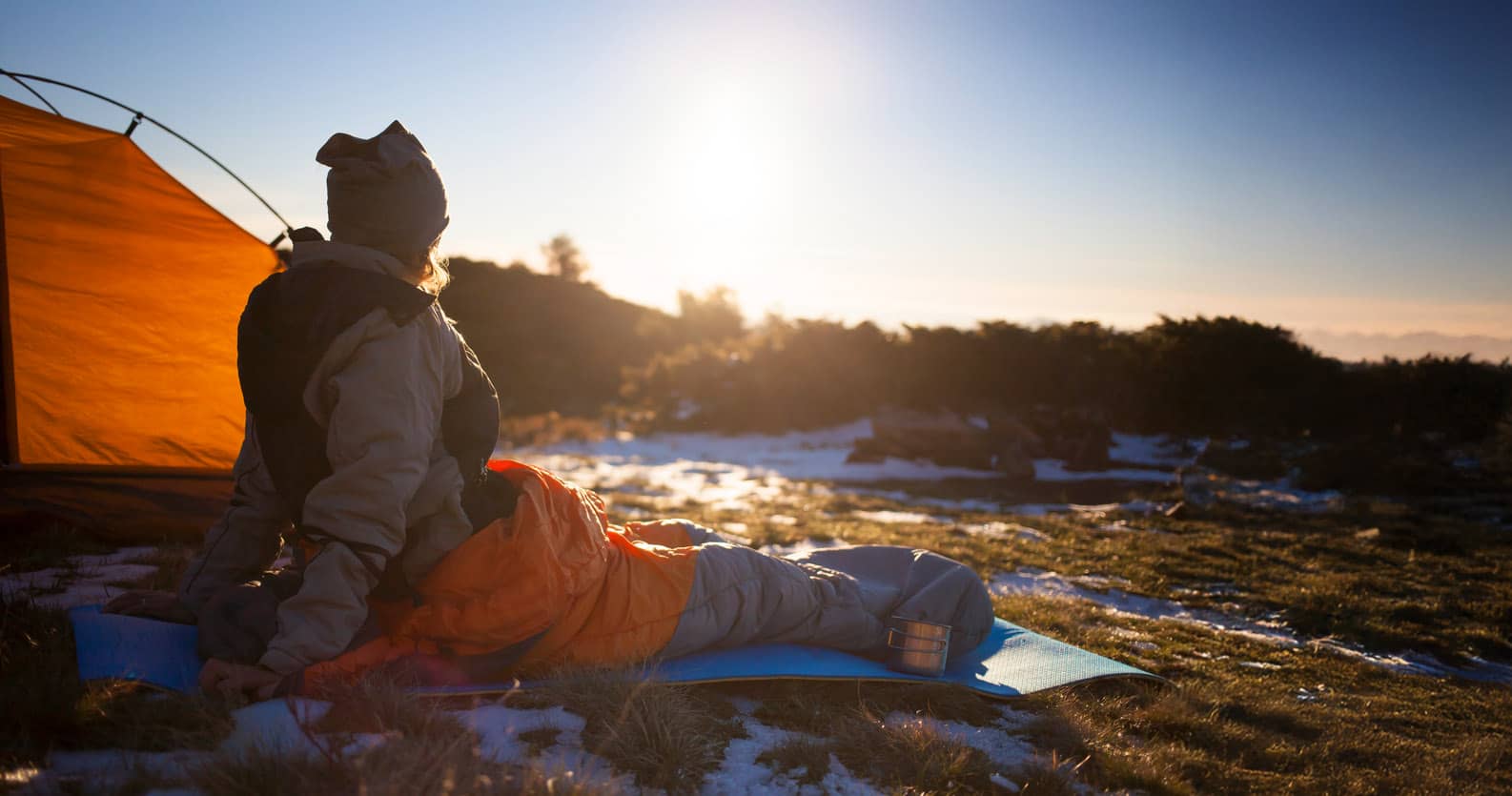Essential Winter Camping Gear Checklist
Equipment Outdoors2025-06-11T19:06:19+00:00Imagine waking up to idyllic, snow-covered surroundings, our breath visible in the crisp morning air. Winter camping brings us closer to this magical experience, but demands the right winter camping gear and preparation. If not properly equipped, that picturesque snowbound landscape could quickly turn into a freezing nightmare.
Let’s get ourselves ready with confidence to tackle anything those wintry conditions might throw at us.
Here’s how Equipment Outdoors can help you gear up for an unforgettable winter camping experience.

Why Winter Camping Requires Specialised Gear
Winter camping is more challenging than the typical summer excursion. Low temperatures, ice, and unpredictable weather demand reliable gear. Standard equipment probably won’t offer sufficient protection. Instead, your gear should be designed for tackling winter’s unique challenges.
Preparation and Planning
Mental preparation is crucial for winter camping. The right mindset helps you adapt to any situation. Before heading out, research the weather conditions, alternative weather routes, and any potential hazards. Inform a trusted person about your plans for extra safety. Stay positive, even when the conditions become tough. Embrace the challenges and find joy in overcoming them.
The Importance of Being Ready
Winter camping demands a thorough preparation. Carrying the right gear will help keep you warm whilst navigating the mountains and be better equipped for any emergency. Safety aside, being prepared also boosts enjoyment, transforming what might be a tough trip into a fun adventure. Just imagine sipping hot cocoa inside a cosy tent whilst watching the snow fall outside – a true charm of winter camping!
Essential Winter Camping Gear
Here’s a list of the best camping gear for winter, so you don’t have to freeze, even in cold weather.
Shelter and Sleeping Gear:
Your tent is your primary shelter, so it needs to withstand harsh winter conditions. Look for a four-season tent with sturdy poles, durable fabric, snow valances, and adequate ventilation to prevent condensation. Properly peg out all the points and guy lines to ensure stability in windy conditions.
A sleeping mat or pad is essential for ground insulation. It acts as a barrier between you and the cold ground, preventing heat loss and ensuring a more comfortable sleep. Look for insulated, inflatable, or closed-cell foam sleeping mats designed for winter conditions. Having this layer of insulation will significantly enhance your warmth and comfort throughout the night.
Choosing the right sleeping bag is crucial. Look for sleeping bags rated for sub-zero temperatures, with features like extra insulation, wind resistance, and a hood for extra warmth. A high-quality sleeping bag can make the difference between having a cosy night’s sleep or a freezing ordeal.

Layering Your Clothing for Warmth:
Layering is essential to staying warm in winter. Start with a moisture-wicking base layer, followed by insulating layers, like fleece or down, and finish with a waterproof, windproof outer layer. Don’t forget to pack extra socks, gloves, and a hat to keep the extremities warm.
Cooking and Food:
Bringing the right cooking equipment is crucial for winter camping. Insulated stoves, windshields, and fuel-efficient cookware help you prepare warm meals efficiently. Liquid-fuel stoves are generally more reliable in extremely cold conditions, maintaining consistent heat even in sub-zero temperatures. However, modern gas stoves with micro-regulator technology also perform well.
Additionally, bring energy-dense, convenience foods like dehydrated meals, instant soups, and porridge. Snacks such as nuts and chocolate provide quick energy boosts, keeping you fuelled whilst on the move.
Staying Hydrated:
Staying hydrated is just as important in cold weather as in the summer. An insulated water bottle prevents your water from freezing, ensuring you always have fluids on hand. Drinking warm beverages can help keep your body temperature stable, so bring plenty of tea or hot chocolate.
Storage Equipment:
Effective storage is key to staying organised and keeping your gear dry. Compartmentalise items into smaller water-tight bags to stay tidy and keep things dry. For example, separate your sleeping gear into a sealed bag at the bottom of your rucksack and keep daytime essentials separate at the top for easy access.
Lighting and Navigation:
With shorter winter days, reliable lighting is vital. Rechargeable head torches provide excellent hands-free illumination, and don’t forget to carry extra batteries as cold temperatures can drain them more quickly! For navigation, a GPS, map, and compass are essential. Make sure you’re familiar with the area to stay on track.
Safety and Emergency Gear:
Safety is paramount in winter camping. The main focus should be on prevention. Shelter and warmth are vital in protecting against cold-related conditions like hypothermia and frostbite. Always keep your safety and survival provisions accessible. Your first aid kit should include essentials for treating common injuries. Add hand warmers and an emergency bivy sack for extra protection. A whistle can be useful for signalling in emergencies.
Other Essential Accessories:
Accessories can greatly enhance your winter camping experience. Invest in a high-quality pair of waterproof, insulated walking boots for essential support and protection. Trekking poles help maintain balance and reduce stress on your knees, especially in icy or uneven terrains. Crampons or micro spikes provide added traction for navigating icy paths. Snow baskets attached to your trekking poles decrease pressure on your lower limbs while trekking in deep snow.
Conclusion
Winter camping offers one of the most rewarding experiences for adventure enthusiasts. With the right preparation and gear, you can ensure your experience is not only safe but also warm and comfortable. Follow our comprehensive checklist, and you’ll be ready for a memorable winter adventure. So, pack wisely, dress warmly, and enjoy the unique beauty of the winter landscape.
FAQs
What are the best materials for winter clothing?
Look for moisture-wicking base layers to keep sweat off your skin. Insulating mid-layers, such as fleece or down, traps heat close to your body. The outer layer should be waterproof, windproof, and breathable to protect against the elements. Don’t forget spare dry clothing for sleeping in and a warm pair of gloves, hat, and thermal socks!
How do you keep your tent warm during winter camping?
Insulate the ground beneath your sleeping area with a high-quality sleeping mat. A well-sealed four-season tent helps retain heat and avoid draughts. Use a warm sleeping bag and additional liners for extra warmth. Proper ventilation is also important to reduce condensation and maintain air quality.
What do you wear to sleep whilst winter camping?
Wear clean, dry thermal base layers to bed, along with a hat and socks to keep your body temperature up. Avoid wearing damp clothes to prevent chills.












Leave a Reply